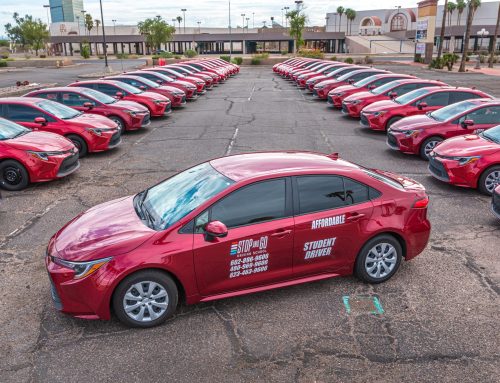State Inspections: Understanding Emissions Tests in Arizona
State inspections might not be on your list of car-related things to get excited about, but they’re essential for keeping our roads safe and our environment clean. If you’re in Arizona, you’ve probably heard about emissions testing — a state inspection designed to monitor and control the pollutants your vehicle puts into the air.
Let’s dive into what these inspections entail, why they’re so important, and how to ensure your car passes the first time.
What Are State Inspections in Arizona? Why Do They Matter?
In Tucson and Phoenix, Arizona’s metropolitan areas, drivers must get an emissions test, a type of state inspection that ensures vehicles meet specific environmental standards. While it might feel like just another hassle of car ownership, there’s a good reason behind these tests. They play a critical role in protecting the environment by making sure that cars run as cleanly as possible.
Vehicles emit a range of harmful pollutants, including carbon monoxide, nitrogen oxides, and hydrocarbons, all of which contribute to poor air quality. Emissions inspections help control these pollutants by identifying cars that don’t meet the required standards. Older vehicles or those with poorly maintained engines are often the biggest offenders. These tests encourage drivers to keep their cars in good shape and push for necessary repairs when vehicles aren’t up to par.
What Do They Look for During an Inspection?
Emissions tests vary based on your vehicle’s age, type, and fuel system, but each is designed to look for specific issues that could cause excess pollution.
IM 147: This inspection is for most 1981 to 1995 vehicles in the Phoenix area. A bit more involved than other tests, this inspection involves putting your car on a dynamometer to simulate various driving conditions. The goal is to measure how your car’s emissions perform under different speeds and loads.
Steady speed/idle testing: This test is standard for 1967 to 1995 vehicles in Tucson and 1967 to 1980 vehicles in Phoenix, as well as newer heavy-duty gasoline vehicles. It’s a more straightforward test that measures emissions while your car idles or maintains a steady speed.
On-board diagnostic (OBD) testing: Most newer vehicles (1996 and later) will undergo this test. Quick and efficient, it involves plugging into your car’s on-board computer to check for any emission-related issues. If there’s something wrong with your emissions system, like a faulty sensor, the OBD will pick it up before it causes bigger problems.
Opacity testing: If you’re driving a diesel vehicle, this test is for you. It checks how much visible smoke is coming from your exhaust. Too much smoke could indicate engine problems or an issue with the emissions system.
Common Causes for Not Passing
Unfortunately, not all vehicles pass their emissions tests on the first try. Here are some common reasons why cars fail:
Faulty oxygen sensor: The oxygen sensor monitors the oxygen level in your car’s exhaust gasses. If it’s malfunctioning, your engine may burn fuel inefficiently, leading to higher emissions.
Worn-out catalytic converter: The catalytic converter is a critical part of your vehicle’s emissions control system, designed to reduce harmful pollutants in your exhaust.
Malfunctioning EVAP system: The evaporative emissions control system (EVAP) prevents gasoline vapors from escaping your fuel tank and entering the atmosphere.
Check engine light on: If your check engine light is on, it’s a clear indication that something is wrong under the hood. It could be a minor issue, but it will likely cause your vehicle to fail the emissions test.
Dirty air filter: A clogged air filter restricts airflow to the engine, causing it to work harder and burn fuel less efficiently, resulting in higher emissions.
Resolving Emissions Issues
If your vehicle doesn’t pass, no need to panic. Most problems can be fixed with routine maintenance or simple repairs. Start by reviewing the test results to pinpoint the problem, and take your car to a reliable mechanic who can diagnose and resolve the problem. Once everything’s fixed, head back for a retest. Arizona typically gives you one free retest within a certain time frame.
Stay Safe and Compliant
Getting your vehicle ready for an emissions test is just one aspect of responsible car ownership. If you want to be an even safer and more conscientious driver, enroll in one of our driver’s education or defensive driving courses. Our experts are here to teach you essential driving skills and tips for staying safe and alert on the road.








